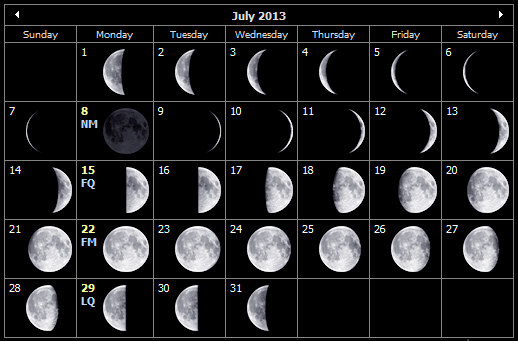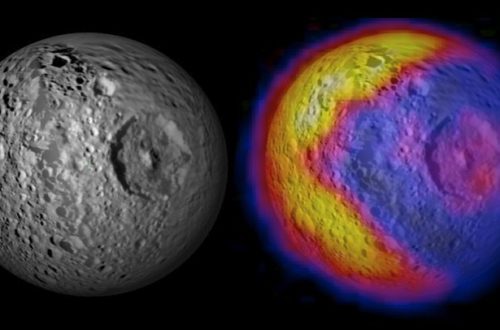Monthly Stargazing Calendar for July 2013
Looking for the July 2025 stargazing calendar?
This month there will be only one major astronomical event. On July 27, 28 we will witness the Southern Delta Aquarids meteor shower. It is an average shower that can produce up to 20 meteors per hour at its peak on the night of July 27 and morning of July 28, but some meteors can be visible from July 12 to August 23. The meteor shower originates from debris left behind by comets Marsden and Kracht. Unfortunately the second quarter moon will block out most of the faint meteors, but with some patience you should still be able to catch quite a few good ones. Best viewing will be from a dark location after midnight. Meteors will appear to radiate from the constellation of Aquarius, but can appear anywhere in the sky.
Moon phases
As you know, the moon has a big impact on the visibility of celestial bodies in the night sky. So here are the moon’s phases for this month:

Would you like to be notified of stargazing events?
Positions of the planets this month
Mercury: The closest planet to the Sun can be seen at dawn and dusk travelling across the constellation of Gemini, not far from the planets Jupiter and Mars. This planet, being the closest to the Sun, will appear to move quickly in the night sky and its position will change in the following weeks.
Venus: The sister planet can be seen in the constellation of Leo. Just like Mercury, Venus can only be seen at dawn and dusk.
Mars: The red planet can be seen travelling across the constellation of Gemini, not far from the planets Jupiter and Mercury.
Jupiter: The gas giant is visible on the edge of the constellation of Gemini. Jupiter can easily be spotted with the naked eye, even in highly illuminated cities.
Saturn: The ringed giant can be seen with the naked eye between the constellations of Virgo and Libra.
Uranus: The gas giant can be seen between the constellations of Pisces and Cetus with the use of a telescope.
Neptune: The blue giant requires a telescope pointed in the constellation of Aquarius in order to be seen.
Major astronomical events next month
- August 11, 12 – Perseid meteor shower peak.
- August 27 – Neptune at opposition.
See also:
- Previous month’s calendar: Stargazing Calendar for June 2013
- Next month’s calendar: Stargazing Calendar for August 2013
Would you like to receive similar articles by email?





